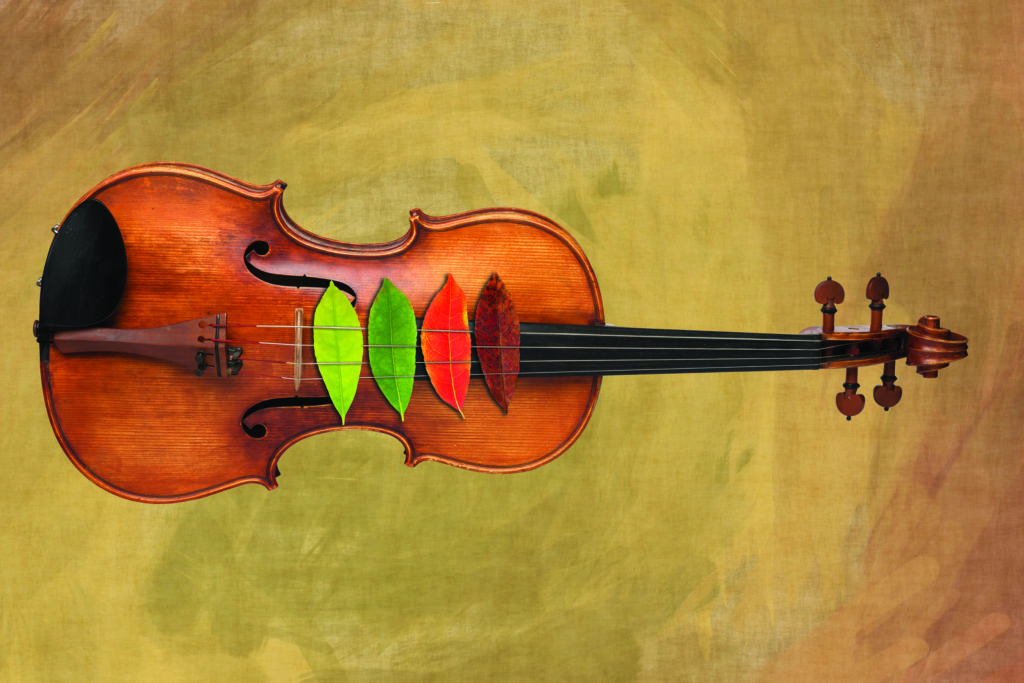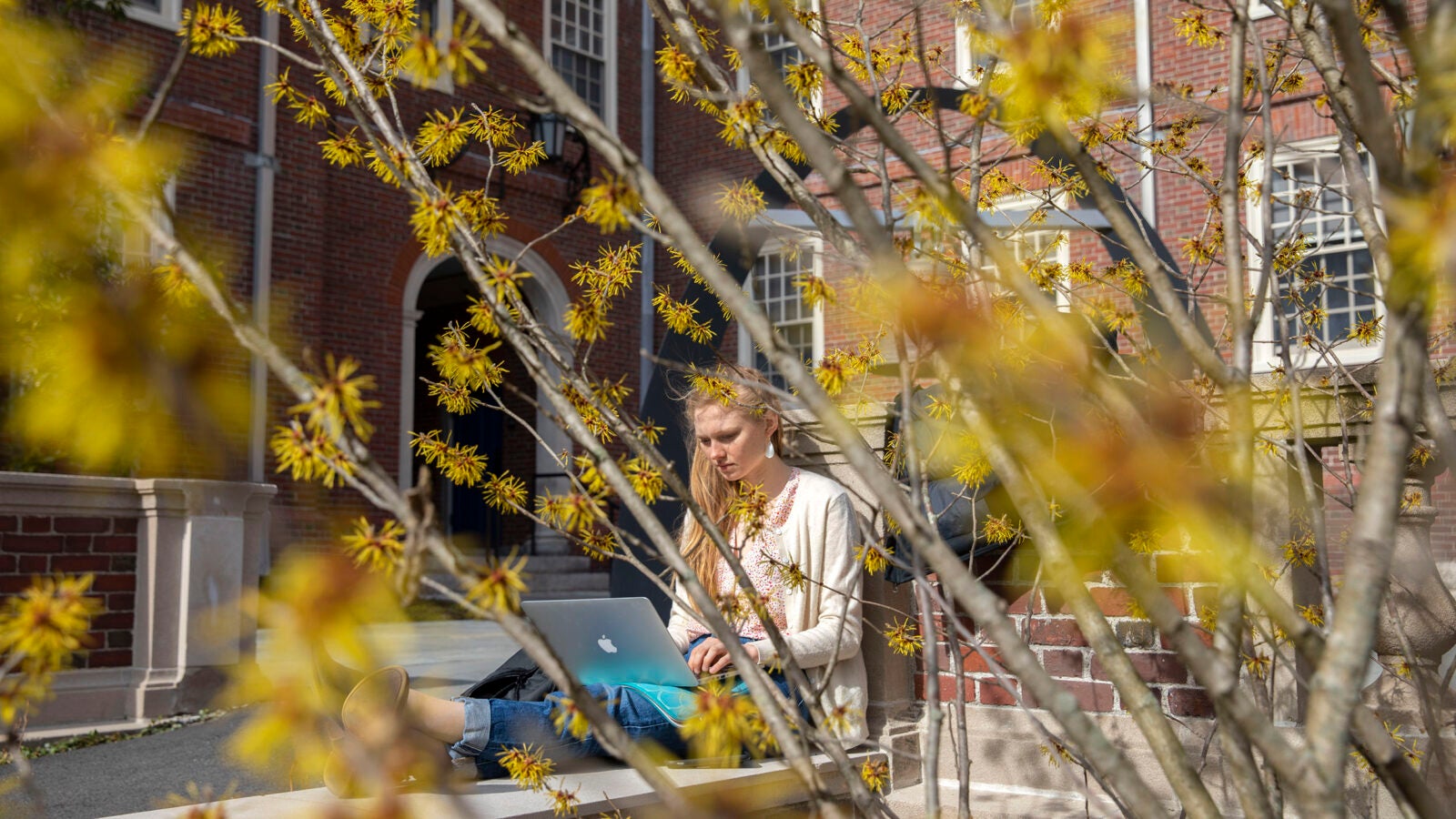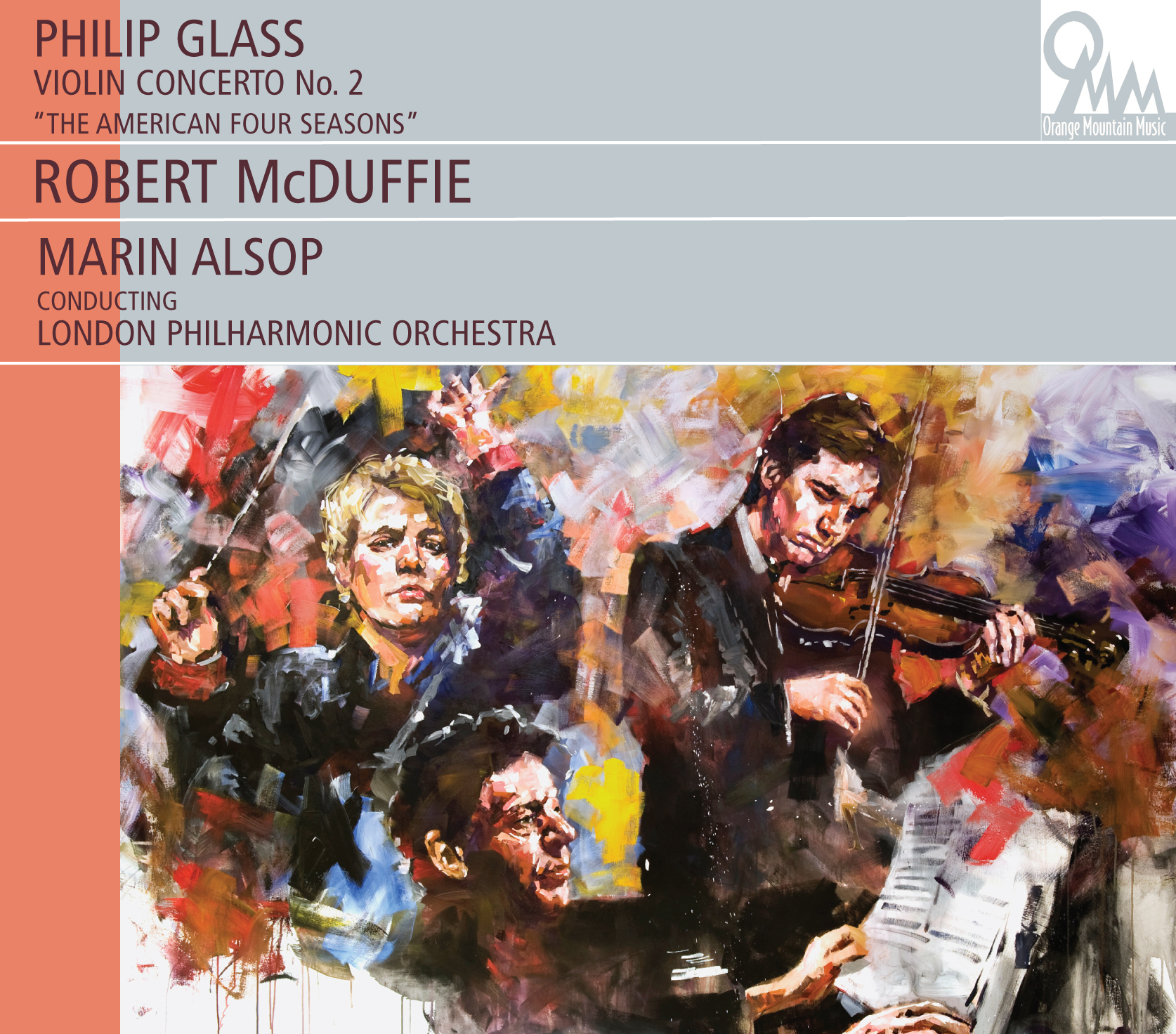Conductor and Violinist Rachell Ellen Wong leads the Seattle Symphony for the complete performance for Antonio Vivaldi's The Four Seasons, on Thursday, October 22, 2020 at 7:30pm on Seattle Symphony Live.
ANTONIO VIVALDI
Le quattro stagioni ('The Four Seasons'), Op. 8, Nos. 1-4
La primavera ('Spring'), RV 269 Allegro—Largo—Allegro: Danza pastorale
L'estate ('Summer'), RV 315 Allegro non molto—Adagio—Presto
L'autunno ('Autumn'), RV 293 Allegro—Adagio molto—Allegro
L'inverno ('Winter'), RV 297 Allegro non molto—Largo—Allegro

BORN: March 4, 1678 in Venice, Italy
DIED: July 28, 1741 in Vienna, Austria
WORK COMPOSED: 1716–1725
Your Colorado Symphony is thrilled to bring you Vivaldi's The Four Seasons, recorded live at Red Rocks Amphitheatre.This special acoustic performance of Vivaldi's perennial favorite (and more) was recorded live with limited audiences in autumn 2020 at Colorado's beloved Red Rocks Amphitheatre. TSO On Demand: Vivaldi's Four Seasons. Due to pandemic-related circumstances beyond our control, the release of this performance has shifted. The new viewing period is March 26–April 15. We apologize for the delay, but we look forward to sharing this unforgettable digital-concert experience with you soon. The good news is that our musicians.
Italian composer Antonio Vivaldi (1678–1741) famously said, 'There are no words, there is only music there.' And yet, ironically, Vivaldi's best-known work, Le Quattro stagioni ('The Four Seasons'), Op. 8, Nos. 1–4, is based upon a series of sonnets. These concerti can arguably be considered among the first truly programmatic pieces; that is, music that tells or follows a narrative. Although Vivaldi composed a wide range of genres, his concerti endure as one of his greatest contributions to the Western classical canon.
Four Seasons Symphonic Music
Vivaldi lived and worked in Baroque Venice. He was an ordained Catholic priest as well as a composer. For nearly thirty years he taught music and composed for an orphanage in the town, named Ospedale della Pietà. Vivaldi crafted an immense œuvre of concerti during this period, exploring the potential of conversations between soloist and orchestra. Although he did not compose The Four Seasons for the orphanage, the works were undoubtedly influenced by his compositions from that period.

Vivaldi composed The Four Seasons between 1716 and 1725. A typical Vivaldi concerto includes three movements, but there is only one sonnet to accompany each of the seasons. As a result, the sonnet breaks into three sections to follow the individual movements. As you listen to these concerti, let your imagination wander and fill with images. The first movement ofLa primavera ('Spring'), RV 269, arguably the most famous of Vivaldi's works, reads: 'Springtime is upon us. The birds celebrate her return with festive song, and murmuring streams are softly caressed by the breezes. Thunderstorms, those heralds of Spring, roar, casting their dark mantle over heaven. Then they die away to silence, and the birds take up their charming songs once more.' Many cues in this sonnet appear in the music, such as the celebrating bird in the solo violin and the murmuring streams in the string accompaniment. The second movement continues: 'On the flower-strewn meadow, with leafy branches rustling overhead, the goat-herd sleeps, his faithful dog beside him.' In this Largo, pay attention to the branches rustling overhead in the ensemble and the slow breathing of the faithful dog. The final movement brings the frivolity and joy of spring: 'Led by the festive sound of rustic bagpipes, nymphs and shepherds lightly dance beneath the brilliant canopy of spring.'
Following the whimsical wonders of spring is the intense heat and fierce thunderstorms found in L'estate ('Summer'), RV 315. The first movement begins with a slow introduction that reflects the opening lines of the sonnet: 'Beneath the blazing sun's relentless heat, men and flocks are sweltering, pines are scorched.' When the solo violin enters, however, the piece suddenly becomes fast and furious. During this movement, listen for the violin imitating the sounds of birds and Vivaldi's subtle transition to the promise of a storm: 'We hear the cuckoo's voice; then sweet songs of the turtle dove and finch are heard. Soft breezes stir the air, but threatening north winds sweeps them suddenly aside. The shepherd trembles, fearful of violent storms and what may lie ahead.' The brief second movement features a slow meditation, highlighting the shepherd's anxiety: 'His limbs are now awakened from their repose by fear of lightning's flash and thunder's roar, as gnats and flies buzz furiously around.' Following this moment of reflection, the dramatic third movement brings the storm: 'Alas, his worst fears were justified, as the heavens roar and great hailstones beat down upon the proudly standing corn.' Listen for the solo violin mimicking the rain pouring down while the accompanying orchestra plays bursts of thunder and lightning.
The subsequent concerto, L'autunno ('Autumn'), RV 293, celebrates the harvest with rousing dances and hunts. Listen for a lively dance in the first movement depicting the end of the harvest and the solo violin mimicking an overflowing cup of wine: 'The peasant celebrates with song and dance for the harvest safely gathered in. Curse of binding minecraft. The cup of Bacchus flows freely and many find their relief in deep slumber.' In contrast, the second movement brings peace and sleep: 'The singing and the dancing die away as cooling breezes fan the pleasant air, inviting all to sleep without a care.' Vivaldi paints this serene picture with a slow tempo and harmonious chords. All instruments move together — including the solo violin — to transport listeners into a tranquil state. The third movement, however, features an exhilarating hunt: 'The hunters emerge at dawn, ready for the chase, with horns and dogs and cries. Their quarry flees while they give chase. Terrified and wounded, the prey struggles on, but, harried, dies.' Listen for the strings imitating hunting horns, guns and dogs while the solo violin leads the chase.
Vivaldi's The Four Seasons concludes with biting winds and idyllic images by the fire in L'inverno ('Winter'), RV 297. Imagine the brisk chill of winter upon you in the joyful first movement: 'Shivering, frozen mid the frosty snow in biting, stinging winds; running to and fro to stamp one's icy feet, teeth chattering in the bitter chill.' The runs in the solo violin perfectly encapsulate the brisk chill found in the air. In contrast, the second movement transfers indoors: 'To rest contentedly beside the hearth, while those outside are drenched by pouring rain.' The solo violin presents a lyrical, reflective melody as the strings play simple accompaniment underneath. Vivaldi layers images in this movement, adding plucking strings in the background as a subtle nod to the rain outside. The final movement of tonight's program is a fast and frenzied depiction of winter's dangers: 'We tread the icy path slowly and cautiously, for fear of tripping and falling. Then turn abruptly, slip, crash on the ground and, rising, hasten on across the ice lest it cracks up. We feel the chill north winds course through the home despite the locked and bolted doors. This is winter, which nonetheless brings its own delights.' The solo violin begins with runs before the strings join in for an ominous illustration of cracking ice and bracing winds. The concerto concludes with the solo violin scampering indoors in attempts to escape the winter frigidity.
Scored for solo violin; harpsichord; theorbo; strings
© 2020 Megan Francisco
Posted on October 15, 2020
Your gift matters more than ever!
Four Seasons Symphony Winter
May 6, 2021 7:00 PM
A concert experience reimagined
June 3, 2021 7:00 PM
A concert experience reimagined Clean dried paint off paint brush.
Updates & Plans for 2020/21 Season
The priority of Eugene Symphony Association continues to be delivering its mission — enriching lives through the power of music — and doing so while maintaining appropriate safety measures for musicians, audience members, and staff.

AMPLIFYING OUR IMPACT
:format(jpeg):mode_rgb():quality(40)/discogs-images/R-13971800-1565198052-7041.jpeg.jpg)
BORN: March 4, 1678 in Venice, Italy
DIED: July 28, 1741 in Vienna, Austria
WORK COMPOSED: 1716–1725
Your Colorado Symphony is thrilled to bring you Vivaldi's The Four Seasons, recorded live at Red Rocks Amphitheatre.This special acoustic performance of Vivaldi's perennial favorite (and more) was recorded live with limited audiences in autumn 2020 at Colorado's beloved Red Rocks Amphitheatre. TSO On Demand: Vivaldi's Four Seasons. Due to pandemic-related circumstances beyond our control, the release of this performance has shifted. The new viewing period is March 26–April 15. We apologize for the delay, but we look forward to sharing this unforgettable digital-concert experience with you soon. The good news is that our musicians.
Italian composer Antonio Vivaldi (1678–1741) famously said, 'There are no words, there is only music there.' And yet, ironically, Vivaldi's best-known work, Le Quattro stagioni ('The Four Seasons'), Op. 8, Nos. 1–4, is based upon a series of sonnets. These concerti can arguably be considered among the first truly programmatic pieces; that is, music that tells or follows a narrative. Although Vivaldi composed a wide range of genres, his concerti endure as one of his greatest contributions to the Western classical canon.
Four Seasons Symphonic Music
Vivaldi lived and worked in Baroque Venice. He was an ordained Catholic priest as well as a composer. For nearly thirty years he taught music and composed for an orphanage in the town, named Ospedale della Pietà. Vivaldi crafted an immense œuvre of concerti during this period, exploring the potential of conversations between soloist and orchestra. Although he did not compose The Four Seasons for the orphanage, the works were undoubtedly influenced by his compositions from that period.
Vivaldi composed The Four Seasons between 1716 and 1725. A typical Vivaldi concerto includes three movements, but there is only one sonnet to accompany each of the seasons. As a result, the sonnet breaks into three sections to follow the individual movements. As you listen to these concerti, let your imagination wander and fill with images. The first movement ofLa primavera ('Spring'), RV 269, arguably the most famous of Vivaldi's works, reads: 'Springtime is upon us. The birds celebrate her return with festive song, and murmuring streams are softly caressed by the breezes. Thunderstorms, those heralds of Spring, roar, casting their dark mantle over heaven. Then they die away to silence, and the birds take up their charming songs once more.' Many cues in this sonnet appear in the music, such as the celebrating bird in the solo violin and the murmuring streams in the string accompaniment. The second movement continues: 'On the flower-strewn meadow, with leafy branches rustling overhead, the goat-herd sleeps, his faithful dog beside him.' In this Largo, pay attention to the branches rustling overhead in the ensemble and the slow breathing of the faithful dog. The final movement brings the frivolity and joy of spring: 'Led by the festive sound of rustic bagpipes, nymphs and shepherds lightly dance beneath the brilliant canopy of spring.'
Following the whimsical wonders of spring is the intense heat and fierce thunderstorms found in L'estate ('Summer'), RV 315. The first movement begins with a slow introduction that reflects the opening lines of the sonnet: 'Beneath the blazing sun's relentless heat, men and flocks are sweltering, pines are scorched.' When the solo violin enters, however, the piece suddenly becomes fast and furious. During this movement, listen for the violin imitating the sounds of birds and Vivaldi's subtle transition to the promise of a storm: 'We hear the cuckoo's voice; then sweet songs of the turtle dove and finch are heard. Soft breezes stir the air, but threatening north winds sweeps them suddenly aside. The shepherd trembles, fearful of violent storms and what may lie ahead.' The brief second movement features a slow meditation, highlighting the shepherd's anxiety: 'His limbs are now awakened from their repose by fear of lightning's flash and thunder's roar, as gnats and flies buzz furiously around.' Following this moment of reflection, the dramatic third movement brings the storm: 'Alas, his worst fears were justified, as the heavens roar and great hailstones beat down upon the proudly standing corn.' Listen for the solo violin mimicking the rain pouring down while the accompanying orchestra plays bursts of thunder and lightning.
The subsequent concerto, L'autunno ('Autumn'), RV 293, celebrates the harvest with rousing dances and hunts. Listen for a lively dance in the first movement depicting the end of the harvest and the solo violin mimicking an overflowing cup of wine: 'The peasant celebrates with song and dance for the harvest safely gathered in. Curse of binding minecraft. The cup of Bacchus flows freely and many find their relief in deep slumber.' In contrast, the second movement brings peace and sleep: 'The singing and the dancing die away as cooling breezes fan the pleasant air, inviting all to sleep without a care.' Vivaldi paints this serene picture with a slow tempo and harmonious chords. All instruments move together — including the solo violin — to transport listeners into a tranquil state. The third movement, however, features an exhilarating hunt: 'The hunters emerge at dawn, ready for the chase, with horns and dogs and cries. Their quarry flees while they give chase. Terrified and wounded, the prey struggles on, but, harried, dies.' Listen for the strings imitating hunting horns, guns and dogs while the solo violin leads the chase.
Vivaldi's The Four Seasons concludes with biting winds and idyllic images by the fire in L'inverno ('Winter'), RV 297. Imagine the brisk chill of winter upon you in the joyful first movement: 'Shivering, frozen mid the frosty snow in biting, stinging winds; running to and fro to stamp one's icy feet, teeth chattering in the bitter chill.' The runs in the solo violin perfectly encapsulate the brisk chill found in the air. In contrast, the second movement transfers indoors: 'To rest contentedly beside the hearth, while those outside are drenched by pouring rain.' The solo violin presents a lyrical, reflective melody as the strings play simple accompaniment underneath. Vivaldi layers images in this movement, adding plucking strings in the background as a subtle nod to the rain outside. The final movement of tonight's program is a fast and frenzied depiction of winter's dangers: 'We tread the icy path slowly and cautiously, for fear of tripping and falling. Then turn abruptly, slip, crash on the ground and, rising, hasten on across the ice lest it cracks up. We feel the chill north winds course through the home despite the locked and bolted doors. This is winter, which nonetheless brings its own delights.' The solo violin begins with runs before the strings join in for an ominous illustration of cracking ice and bracing winds. The concerto concludes with the solo violin scampering indoors in attempts to escape the winter frigidity.
Scored for solo violin; harpsichord; theorbo; strings
© 2020 Megan Francisco
Posted on October 15, 2020
Your gift matters more than ever!
Four Seasons Symphony Winter
May 6, 2021 7:00 PM
A concert experience reimagined
June 3, 2021 7:00 PM
A concert experience reimagined Clean dried paint off paint brush.
Updates & Plans for 2020/21 Season
The priority of Eugene Symphony Association continues to be delivering its mission — enriching lives through the power of music — and doing so while maintaining appropriate safety measures for musicians, audience members, and staff.
AMPLIFYING OUR IMPACT
Connection, Creativity & Community Tabletop simulator g2a.
Hear from Francesco, musicians, and community members about the impact Eugene Symphony has in the concert hall and beyond!
EDUCATION & COMMUNITTY
Young Artist Competition
Congratulations to the 2020 Eugene Symphony Guild Young Artist Competition winners! Read more about these talented young musicians from across the state.
SUPPORT US
Ticket sales cover just 50% of the costs required to support the Eugene Symphony. Our performances, youth programs, and community engagement activities are possible because of your support. THANK YOU!
